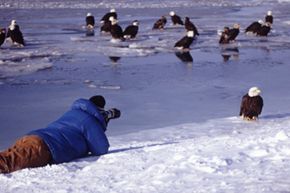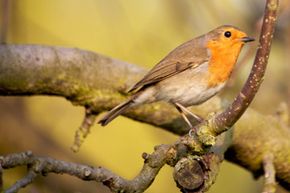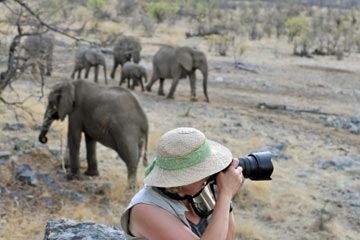If only bird photography worked like the human type and you could just point your camera, holler "cheese" and push the button. But yell anything at all to a streak-breasted jungle flycatcher and your rewards will be a flutter of wings, a quick swoop and an empty spot where the bird used to be. To understand bird photography, you must first understand bird psychology.
Except for birds of prey like eagles and hawks, most birds are prey, which means they and their young and eggs become food for other animals. Their methods for survival, therefore, include camouflaged appearances, hard-to-access nests and quickness to flight. Those survival strategies make bird photography more challenging than other types of wildlife photography. You can mitigate those challenges in several ways: knowing bird behavior and migration patterns and owning the right equipment and knowing how to use it. On top of that, add three traits you should have: patience, perseverance and willingness to practice.
Advertisement
To photograph birds, you first need to find them. That means you need to know where they live, where they migrate and when they migrate. You may hear that a certain beach or forest is alive with the sounds and sights of birds, but if you go during the wrong time of year, you may hear little more than an eerie silence. Each type of bird has its own habits and patterns, so learn about the birds that interest you before you attempt to photograph them. You can jump start your education by joining outings of a local birding club or Audubon Society, or you can check out the Northern Prairie Wildlife Research Center Web site, which provides information on bird migration patterns.
If you're a newcomer to bird photography, visit places where birds are accustomed to human activity, such as popular seashores -- your subjects will be less likely to scatter when you approach. Before you begin snapping photos, get low to the ground -- all the way down to your belly. This not only makes you a less startling and threatening visage to your subjects, but it also gives you the advantage of capturing them on their level, eyeball to eyeball. And really, isn't that the main enjoyment of looking at bird photos, to feel like you're right there with them?
Now that you understand some of the basics of bird photography, you may be wondering what kind of camera you should use. Keep reading to learn about bird photography equipment.
Advertisement



